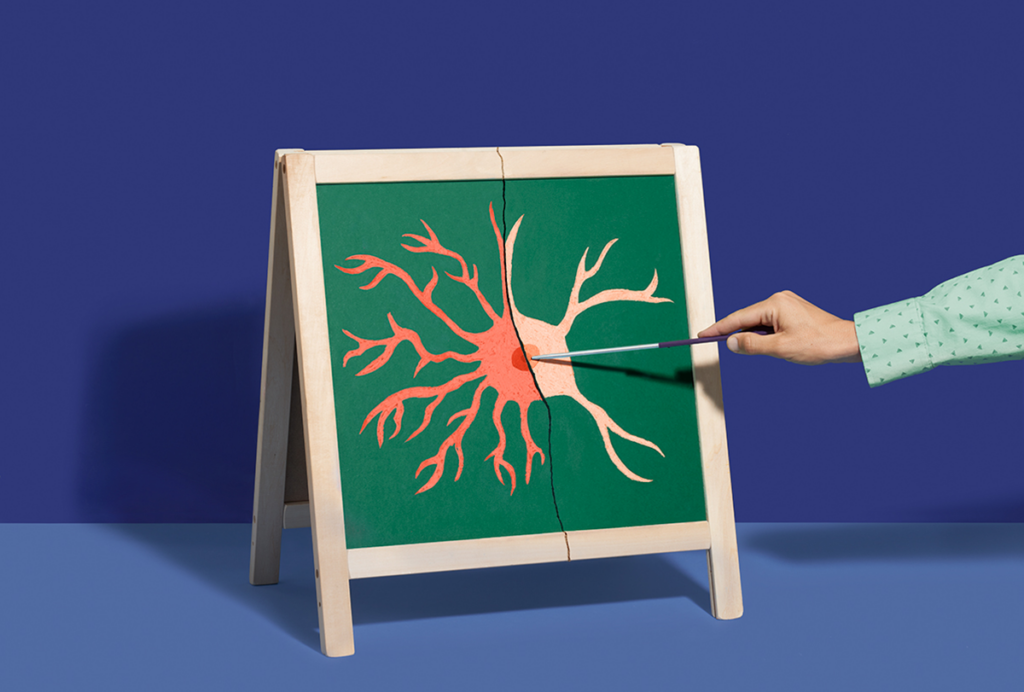Fragile X symptoms reversed in mice
Fragile X syndrome is a rare and devastating condition, and a risk factor for autism. New research suggesting the condition is reversible in mice has some wondering whether treatments for the syndrome ― and for some forms of autism ― could be on the horizon.
Fragile X syndrome is a rare and devastating condition, and a risk factor for autism. New research suggesting the condition is reversible in mice has some wondering whether treatments for the syndrome ― and for some forms of autism ― could be on the horizon.
Characterized by impaired brain function and elongated faces, fragile X syndrome is so named because of its link to the X chromosome, meaning that males, who carry just one copy of the chromosome, are more at risk.
A series of 200 or more short DNA repeats in a stretch of non-coding DNA creates a distinctive kink in the X chromosome, hampering the production of the fragile X mental retardation protein, or FMRP.
FMRP is thought to control the activity of proteins in the brain called metabotropic glutamate receptors ― specifically one called mGluR5 ― which respond to messages transmitted by the signaling compound glutamate and regulate protein synthesis at synapses. In the absence of FMRP, the production of proteins regulated by mGluR5 apparently spins out of control, making neurons overly excitable in response to stimuli1.
The overactive receptor idea is “the most comprehensive hypothesis we have for fragile X,” says Walter Kaufmann, director of the Kennedy Krieger Institute’s Center for Genetic Disorders of Cognition and Behavior.
In a paper published on 20 December in Neuron2, Massachusetts Institute of Technology researchers and their colleagues report that that dialing down the activity of mGluR5 in mice reverses fragile X symptoms in the animals. In the popular press, some articles carried headlines declaring that scientists had cured autism in mice.
“The people I’ve chatted with are pretty excited,” says Cornell University neuroscientist Matthew Belmonte, who was not involved in the study. “It’s hot.”
Reversed symptoms
Led by Mark Bear, the research team used mouse models of fragile X syndrome, which lack the FMRP protein. Deleting one of two copies of the mGluR5 receptor in these mice corrects seven of the eight fragile X-like symptoms the researchers tested.
Similar mutations might also influence pathways related to protein synthesis in autism, the researchers say. The idea “makes sense given the candidate genes that are giving positive results,” says Belmonte. The next step would be to test compounds that block mGluR5 activity in individuals with fragile X syndrome3.
But Kaufmann is skeptical, noting that the hypothesis does not explain other symptoms observed in fragile X.
The syndrome affects about one in every 4,000 boys or 6,000 girls. A fraction of those children also have autism, attention deficit disorders, or extreme social anxiety. The autism associated with fragile X may also be distinct from that seen in children other types of autism4, Kaufmann says, adding that it’s difficult to make complex behavioral predictions based on animal models.
“It’s hard to model autism, period,” Kaufmann says. “I think we need to be very cautious about this.”
References:
Recommended reading

INSAR takes ‘intentional break’ from annual summer webinar series

Dosage of X or Y chromosome relates to distinct outcomes; and more
Explore more from The Transmitter

Null and Noteworthy: Neurons tracking sequences don’t fire in order


